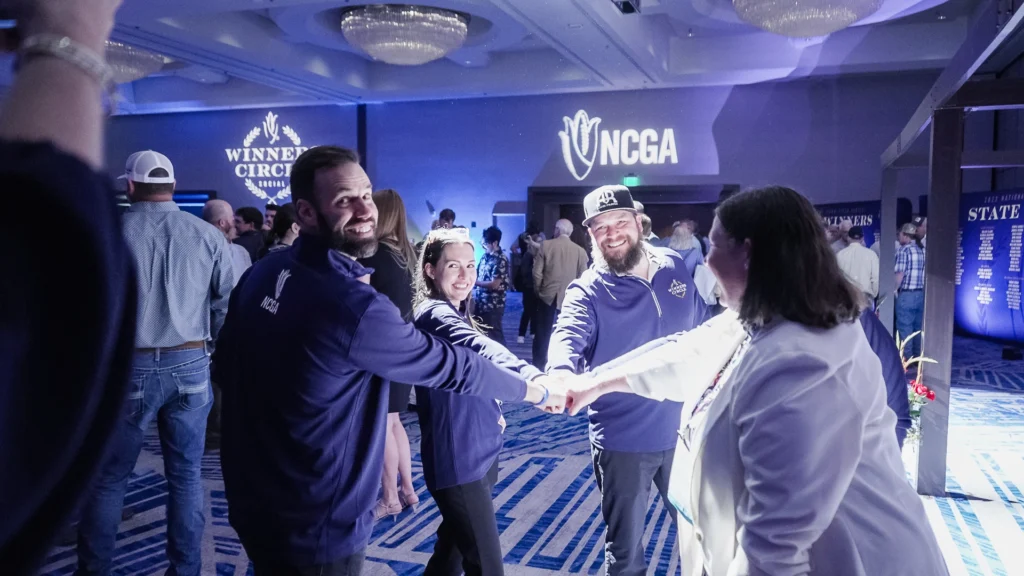5 Ways Ag Brands Can Make Their Experiential Marketing More Effective
The agriculture industry is no stranger to event marketing and in-person farmer experiences. From trade shows to conferences to field days, brands have had face-to-face engagements with farmers for decades.
What these experiences have looked like, however, hasn’t always kept pace with evolving experiential marketing trends outside of the industry.
Consumer brands increasingly design and build immersive, interactive and even personalized experiences around individuals at events and in their everyday lives (with “on the street” pop-ups and guerilla activations).
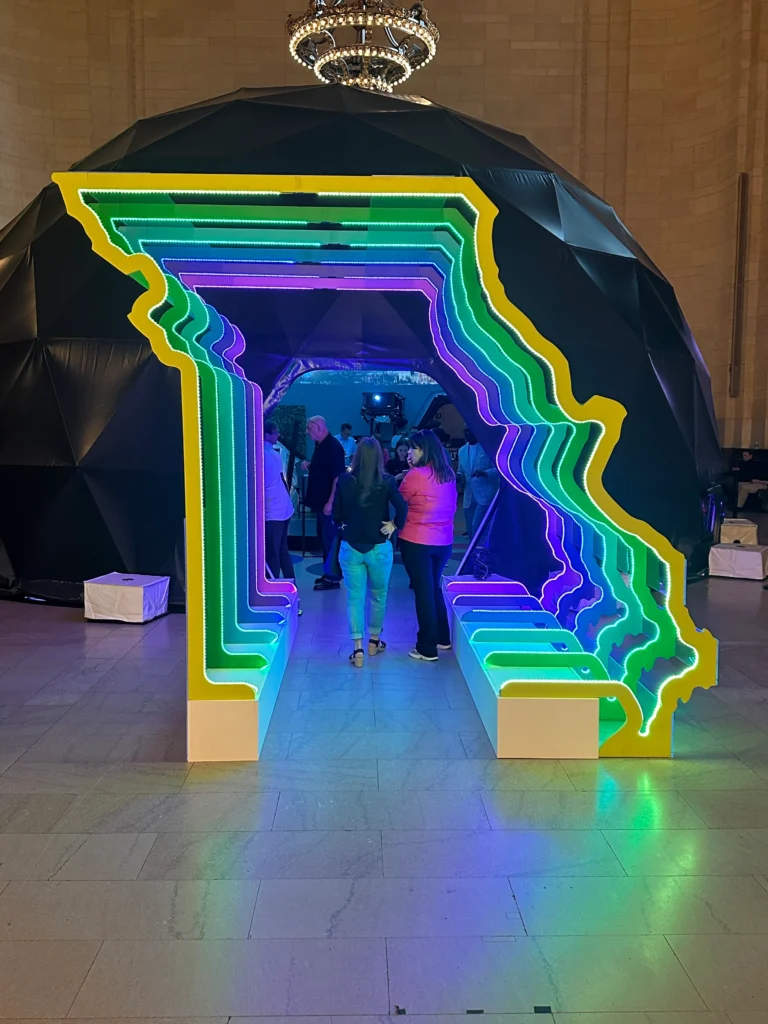
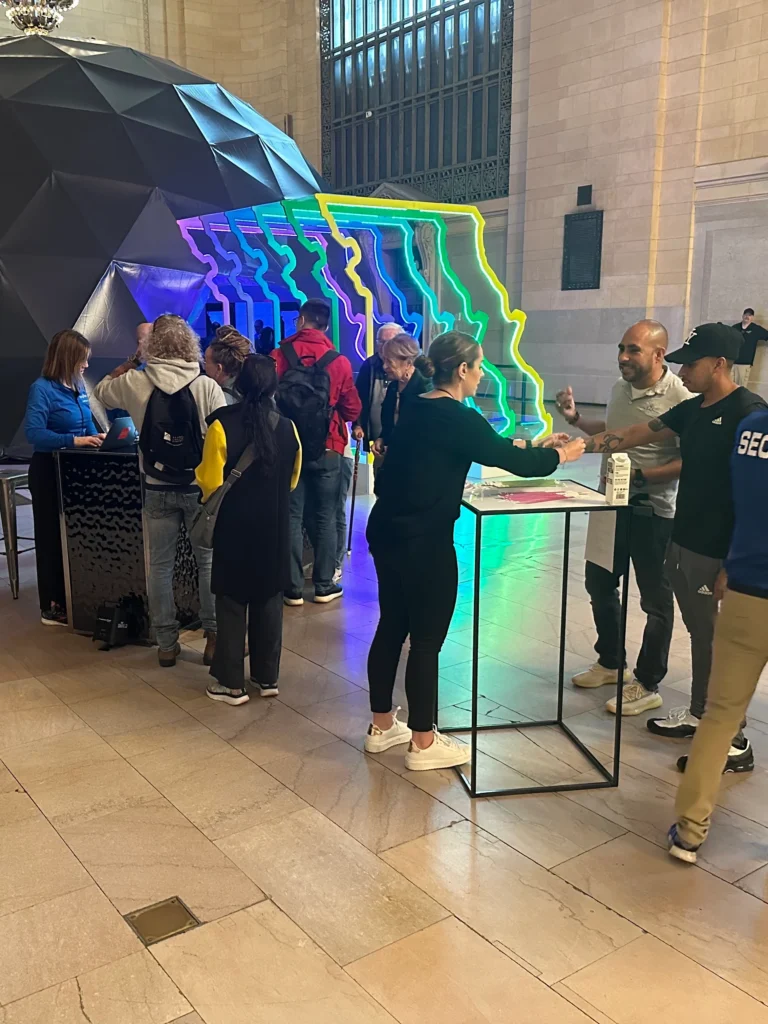
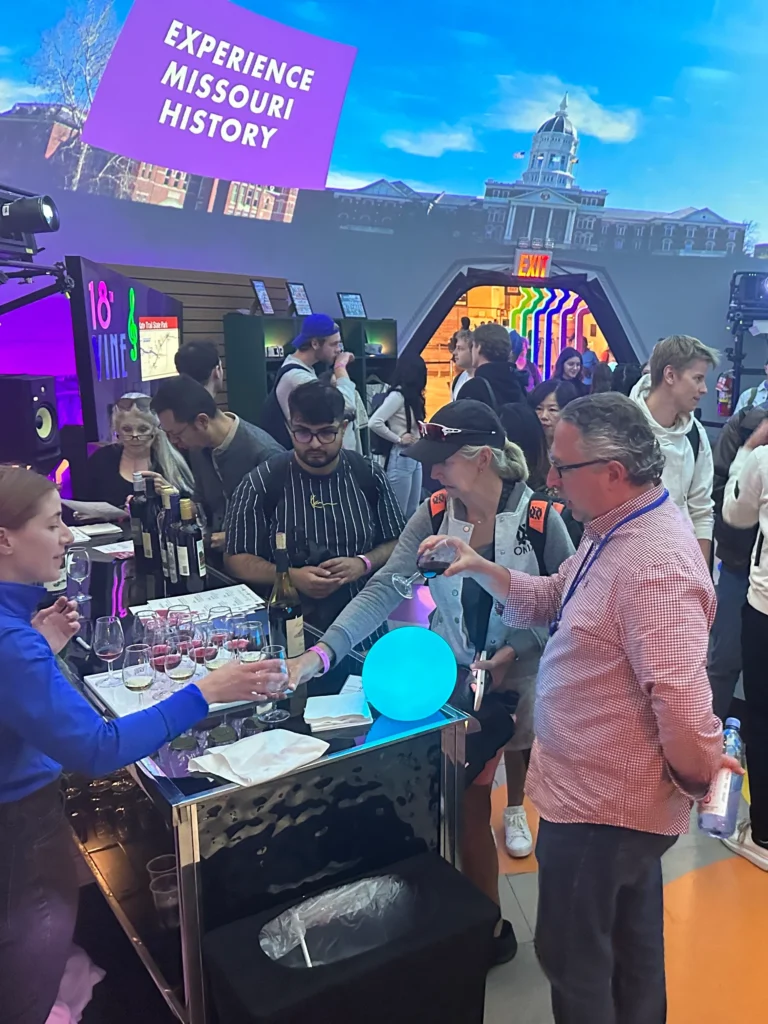
Meanwhile, ag brands are still producing what are basically 3D brochures of product information—and in the case of ag equipment brands, they feature a large machine as the centerpiece.
But with the advancements in ag technology increasingly trending toward digitization, customization and product integration, there’s no reason that the experiences created for farmers shouldn’t follow suit.
Here are five ways ag brands—especially agtech and equipment brands—can ensure their in-person farmer experiences are engaging, memorable and, most importantly, economically effective.
1. Make it about them
Design around their wants and needs.
At this point, anyone in a marketing or product role should have already infused user-centricity or customer-centricity into their craft. Your experiential marketing shouldn’t be any different.
Just like a UX/CX design process, start with your audience — their wants and needs, perspectives and mindsets. Resist the urge to make the experience a 3D brochure about your product. Instead of thinking about what you want to tell them, ask yourself, “What do they really want to know?”
Don’t just tell. Show.
The whole point of an in-person experience is to engage people in a physically immersive way that operates on multiple sensory levels. It’s immediate and visceral, anchoring their memory in a place and time — what they saw, what they heard, and who or what they interacted with.
Why waste that opportunity by presenting them with informational content they can find on your website?
Instead, show them the product. Let them experience it for themselves.
This is a chance to give ag equipment and technology brands in particular a hands-on experience. Let them see it up close. Help them learn how it works and understand how it will benefit their operation.
And if you can, find a way to tailor it to their use case. Ask a couple of questions about their operation so you can customize the experience in a way that will make it more relevant. This will go a long way to helping them see how your product could fit on their farm.
This leads to the next point …
Give them something to think (and talk) about.
Want to get them thinking about how your product or service would plug into their operation?
Give them a way to organize their thoughts around the possibility.
Whether it’s a plan, guide, map, inventory or self-assessment, put something in their hands (and heads) when they enter the space that gets them thinking about their operation and the problems they’re trying to solve while they move around the experience. This will make your product feel like a real and obvious solution as they learn more about it.
Make it convenient for them.
Most farmers will never attend Commodity Classic. Most other farm shows are regional. And even the farmers who live close by often don’t make the trip.
That means many potential customers will never see your trade show activation in person.
So how can you reach them without them coming to you?
Finding a way to show up where they already are can be a powerful way to tell them they matter.
The obvious opportunities are field days, trainings and other retail events, but it’s important to remember that:
- These are still experiences that you can design based on everything we’re covering here. Just because it’s something your brand has done the same way forever doesn’t mean it can be better, more impactful and more effective.
- These aren’t the only places you can meet them where they already are. Community events like fairs, festivals and parades. College and high school sports games. Tractor pulls. Rodeos. Church events. There are plenty of ways to get local (usually as a sponsor) — you’ll have to decide what makes the most sense for your brand based on the opportunity for exposure and interaction.
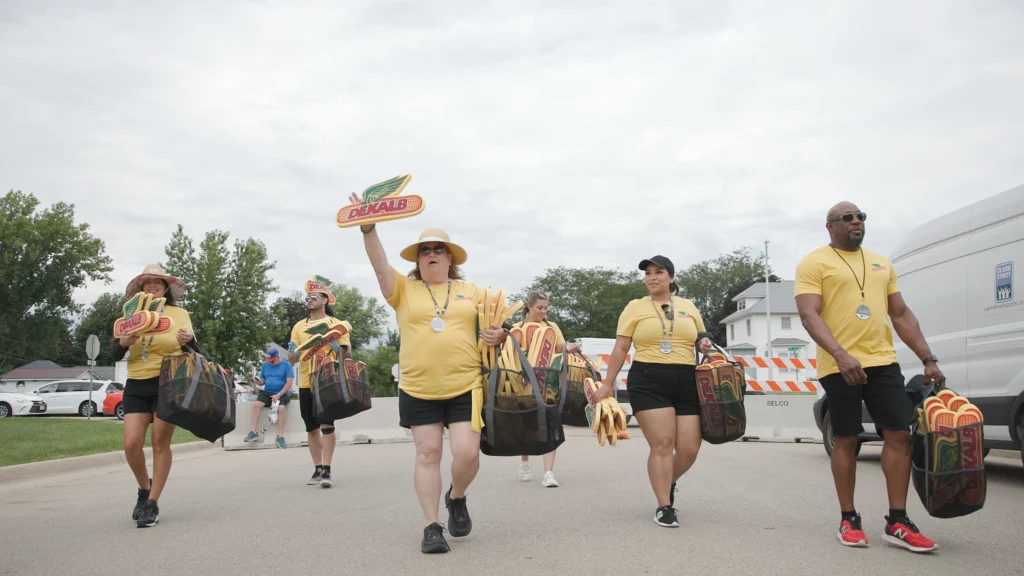
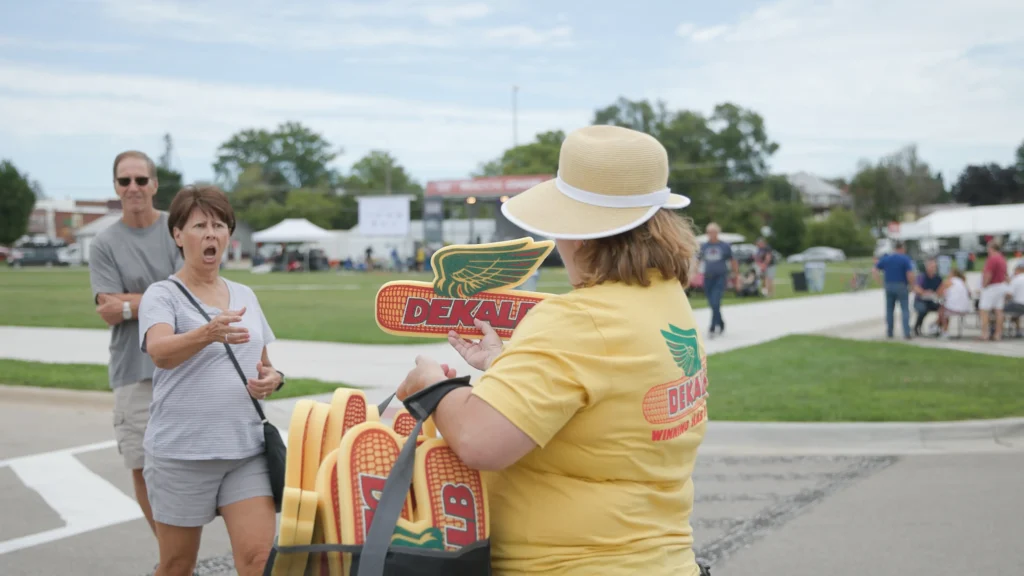

Give before you get.
Capturing information is a central part of in-person experiences, whether it’s tracking data to quantify exposure and engagement or collecting contact information from customers. For the most part, any event attendee expects this sort of data transaction to take place — but they also expect something in return.
So make sure your experience is leading with value. Ideally, the experience is valuable in its own right and also teases “more where that came from” (e.g., sign up to learn more about …, get early access to …, get a free trial of …, get a discount on …).
Or maybe there’s a bonus part of the experience they can gain access to by providing their information — something exclusive, personalized or customized.
If worst comes to worst, you can always resort to the old standbys like sweepstakes entries and premium giveaways. Just know that (a) branded wearables are free advertising, so try not to make the barrier too high, and (b) other brands are likely giving that stuff away and asking for nothing in return.
And whatever information you ask for, make it easy for them to give it to you. Queuing up to enter an email address into a clunky form on an iPad is not a great experience, so why not let them scan a large QR code to do the process on their own device? Connect it to account creation to make the utility more direct, ideally within your own app experience. Consider using Single Sign-On for account creation to make things even easier. If their mobile experience adds a dimension to the in-person experience, even better.
2. Stay focused
Be clear on objectives.
It’s easy to get so swept up in planning an in-person experience that you forget what you’re trying to accomplish. Sure, it can and should be fun, exciting, engaging and unexpected, but not at the expense of effectiveness.
Effective in what way? Presumably, you’re spending money on producing an experience in the hopes of achieving a specific outcome. Maybe it’s to support marketing efforts. Maybe it’s for a sales team, dealers, employees or another group of partners. Whatever the purpose is, be clear from the beginning and establish relevant success metrics or KPIs so that everyone involved knows what effects you’re looking for and how they connect to overarching business goals.
These can be specific to the experience, but they should root into higher-level objectives and strategy and be built around what you already know about your audience and what matters to them.
For example, if you’re trying to engage prospective customers, the experience should track closely with your overall marketing strategy and be informed by the market research you have on farmers and their relationship with your brand and category. Remember, the experience is ultimately for them.
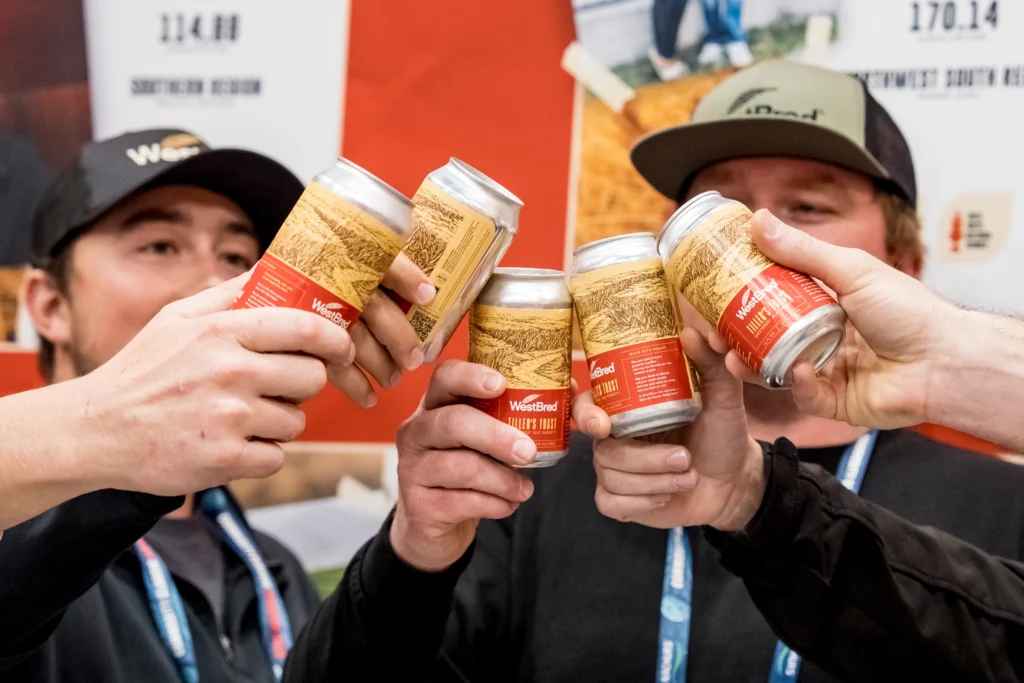
Your approach should vary depending on the status of your brand, product or service. Are you introducing something new? Differentiating something that already exists? Reinforcing themes, messages and associations that keep your brand top of mind and preferred? Each of these scenarios calls for a different approach to designing your experience.
Model investment and outcomes.
Once you’re clear on objectives and KPIs and how they relate to overarching business goals, it’s a good idea to do a little back-of-the-napkin math.
Let’s say that the experience is ultimately geared toward driving new customer acquisition, with an objective of generating leads or demo sign-ups that the sales team can either interact with in person or follow up on later.
In a perfect world, you would have robust data from previous activations to tell you:
- How many people attended? If you’re activating within a larger event, this could be the total number of attendees, in which case you would also want to know how many people attended your portion of the event.
- How many attendees signed up, or how many leads were generated? This is the number of people who took the desired action to indicate interest, and since the goal in this example is new customer acquisition, you would ideally filter out existing customers. (NOTE: Sign-ups that are part of a contest or giveaway are not the same as someone indicating interest in a product.)
- How many leads led to a demo or sales meeting? Of those who indicated interest, how many actually went on to learn more, either from a product demo or sales call?
- How many demos or sales meetings led to a sale? How many new customers were generated from the demos or sales meetings?
- What is the average value of a sale? If you only have one product with one price, this number will be easy to find. However, if you have a portfolio of products with different price points and potential quantities, this is obviously going to need to be calculated.
From here, you can do a couple of things:
First, you can build a funnel with the counting metrics (i.e., the “how many” questions). Use the counts to calculate percentages of the total (i.e., total attendees), and then work out the percentages between the stages/layers (i.e., the percentage of attendees who signed up, the percentage of sign-ups that led to a demo, etc.).
Next, you can use the average purchase value to quantify the event’s base-level impact and assign a value to each individual at each stage/layer (e.g., if an average sale is worth $100K and 10% of demos lead to a sale, then a demo is worth $100K*0.10 or $10K). Work that back to the value of an attendee, and you can start to size your investment accordingly and establish targets.
Here’s an example KPI “funnel” for a tradeshow activation:
| KPI | Total Volume | Conversion Rate | Value Metric | Total Value |
| Total # of show attendees | 100,000 | |||
| Total # of booth visitors | 10,000 | 10% | Avg. value of a booth visit | $100 |
| Total # of sign-ups | 1,000 | 10% | Avg. value of a sign-up | $1,000 |
| Total # of demos | 100 | 10% | Avg. value of a demo | $10,000 |
| Total # of sales | 10 | 10% | Avg. value of a sale | $100,000 |
You can also look at larger gaps between stages/layers to identify areas of optimization in planning the next experience. How can you increase the percentage of attendees who sign up? How can you gain a larger percentage of total event attendees?
What if you don’t have this data at all?
Do some research, talk to your sales team, and pencil in what seem like realistic best- and worst-case scenarios. This will at least align you and your team on expectations, variance of potential outcomes and what data you need to capture to set baselines.
Doing this math in the beginning will help you stay consistently focused on what the experience is ultimately meant to accomplish and the targets you need to hit along the way.
Stick to the script.
Do you have brand guidelines? Use them. Established messaging? Align with it. An existing comms plan or content strategy? Let it inform how you build the experience.
Don’t fall for the temptation to dream up some crazy theme or roll out gimmicky stunts that have nothing to do with your brand. This is a chance to reinforce what you’re trying to get your audience to remember, so make it fun and memorable in a meaningful way that further cements how you want them to think about your brand.
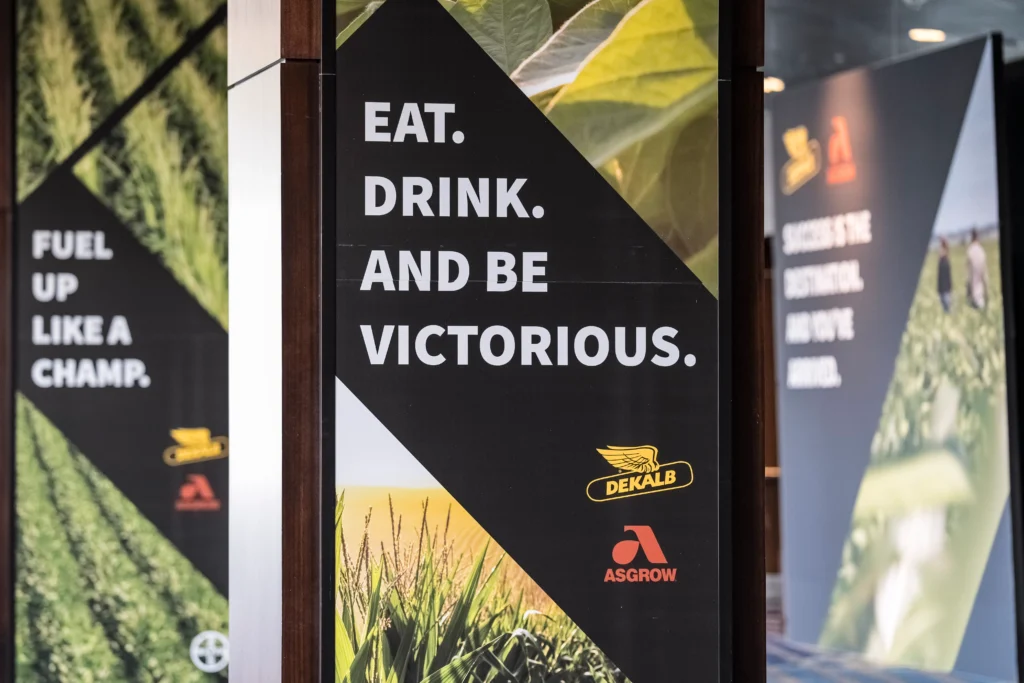
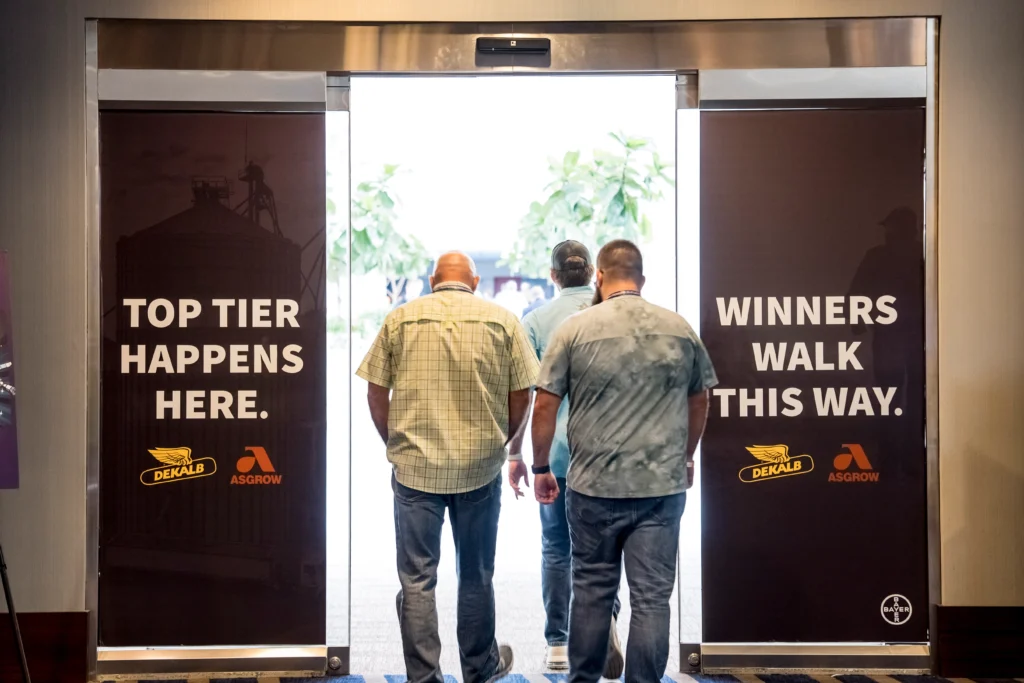
This goes for capturing and sharing content from the experience, too. Maybe your experience has a fun party vibe. That’s awesome, but that doesn’t mean your social channels should automatically become a New Year’s Eve photo stream.
Have a plan for how to fit the content you capture into your preexisting content publishing approach and what kind of KPIs you have for this content specifically. Are you going for FOMO and encouraging people to attend the next event? Are you sharing vox pop testimonials from attendees? Figure this out ahead of time to make sure you capture the right content, know what it’s supposed to accomplish, and know how you will measure its effectiveness.
3. Actually innovate
Give attendees a new experience.
One thing we all know about agriculture is that every brand is innovative — all of them. Just ask them — they’ll tell you.
And every year, they’re rolling out their latest innovations, trying to gather enough momentum to get over the hump that is the “agricultural innovation adoption curve.”
But you wouldn’t know how innovative they are by looking at the in-person experiences they develop for farmers. Much of what you see doesn’t look all that different from what it did 15 to 20 years ago.
Some of this gets blamed on farmers. “They don’t like new things. They aren’t great with technology. They don’t even have their own email address.”
But that’s not true, is it? Farmers are embracing a whole set of “new” every season, adopting new technologies at a faster rate than ever, supported by a younger generation that is helping accelerate their advancements.
So let’s give them some credit and also acknowledge that they do a fair bit of innovating themselves. If they can see their own innovative mindset in your brand and your experience, then that’s the best way to get your brand to be seen as truly innovative.
As is often the case, it’s always about balancing the familiar and the novel. When you plan your experiences, think about the MAYA Principle — what is the “most advanced, yet acceptable” innovation you can design that introduces a new, better way that still feels related to the old way?
Break out of the trade show box.
Nowhere is there a more paint-by-numbers approach than in the trade show space.
We all recognize the conceptual boundaries of the “trade show box” — pull-up banners, table skirts, signage, a sales rep standing behind a kiosk in front of a looping video on a flat screen.
It’s what a trade show activation is supposed to look like.
Some of this is borne out of necessity and efficiency. It’s expensive to start with a blank canvas, so many of the standard elements are standard for a reason — they’re cheaper that way.
But that doesn’t mean you need to start with templates, formulas and stock approaches. Yes, there are trade show table stakes, but you can (and should) place bets beyond them.
One way to do this is simply to ask the following questions:
- What will people expect?
- What would people never expect?
Obviously, it makes sense to meet certain expectations because that’s just the best way to achieve an outcome. And many unexpected ideas may not make sense at all.
But just by asking yourself those two questions, you’ve already started exploring a much wider range of possibilities — certainly more than you would have if you planned on doing some version of what every other brand does or what your brand did last time.
And each of those possibilities is a path to being more memorable and more effective.
Push the parameters.
One way to get to something unexpected is to question what can’t be done. What are the unspoken rules of trade shows that every other brand has always assumed they have to follow?
“It has to look like this.” Does it?
“We can’t do that.” Are you sure? Why not?
And don’t forget to consider the physical boundaries of the trade show box.
For starters, there’s the footprint itself. Maybe you only have a 10×10 space. That’s width and depth — what about height? How far vertically could you go, and what would that look like?
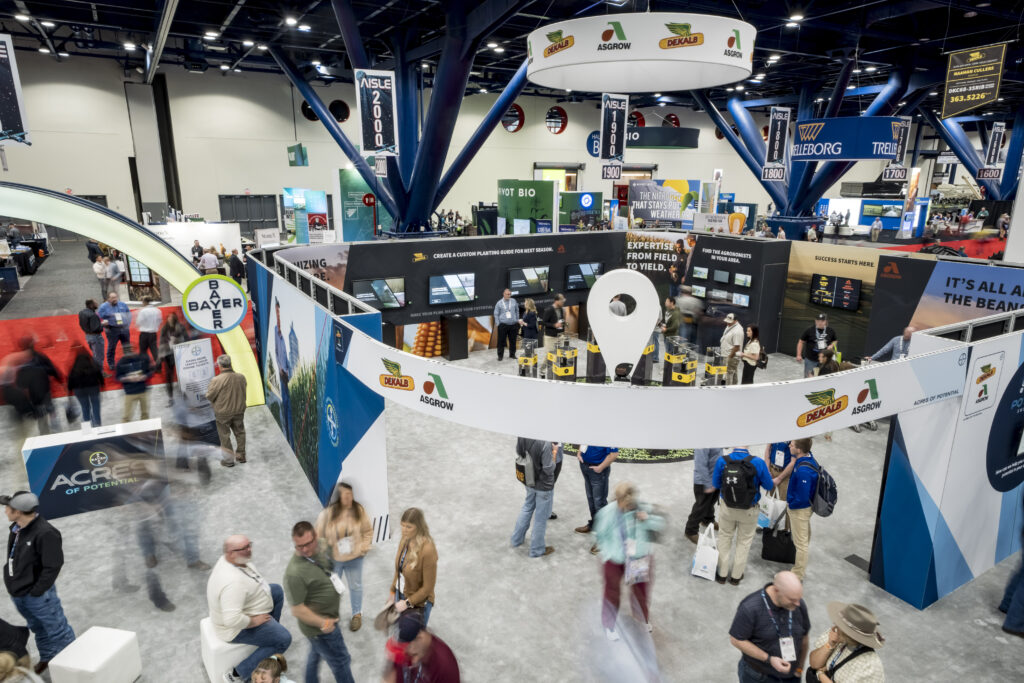
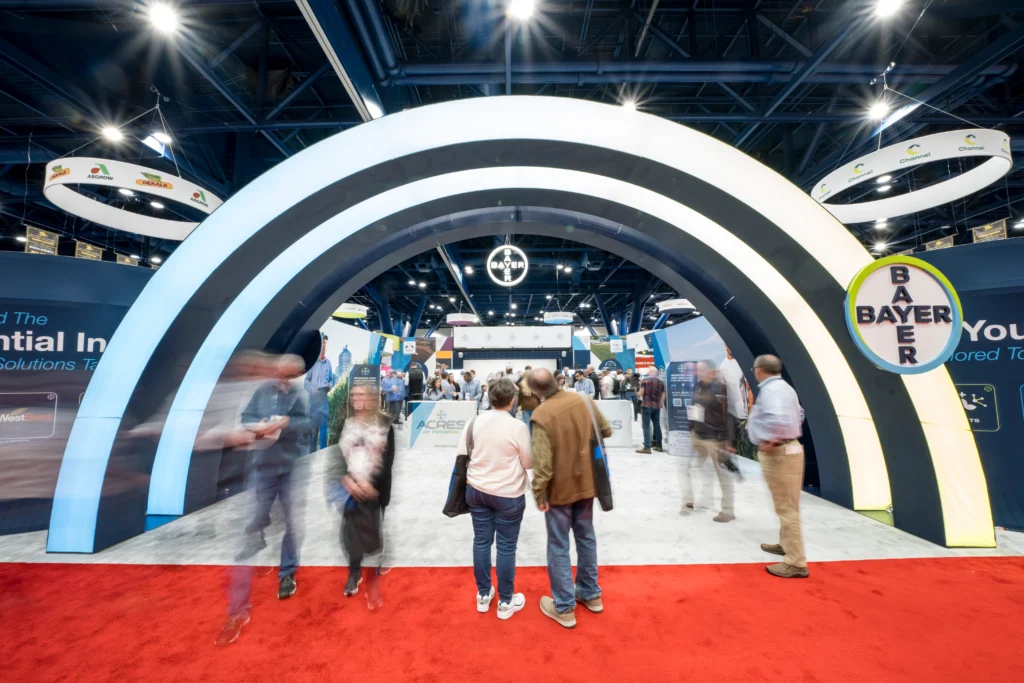
What if your 10×10 space transported attendees to a 10×10 space somewhere else? A farm? A lab? A production facility? A coffee shop? An awards stage? Underground? One hundred feet above the ground?
What about outside of the footprint? Where could you show up, and what could you do elsewhere in and around the event? Could you engage in pathways and hallways around the broader event space? In sponsored sessions and breakouts? In stunts or guerilla moments that make people stop and pull out their phones?
Or maybe it’s outside of the event space altogether. Don’t have room in your 10×10 space for your new piece of equipment? Maybe you feature the newest, most innovative component in your space, but then get a permit to park the whole machine outside or across the street. Maybe you can do test drives or demos within walking distance of the show site.
Push yourself to get creative with how you can explore — and exceed — the space’s physical limitations.
Evolve the technology.
Even the most advanced wristbands and lanyards have become pretty standard. And that may be OK for what you need — sometimes standard is simple and reliable, which is what you want in your event technology.
Mobile devices have unlocked many more possibilities for attendees to access and interact with the experience, and people have become far more comfortable with how this sort of physical/digital integration can work in real time.
So don’t be afraid to explore how a mobile app might afford you ways to streamline a check-in experience, provide access to bonus content or VIP moments, interact with elements of the space and even personalize parts of the experience.
Digital communications and data obviously increase the opportunity to enrich the experience before, during and after, and there are ways to make this evident for attendees.
Just make sure you build your communications around value to them rather than value to you. They will be able to tell if it’s just a thinly veiled attempt to capture and extract information from them or market to them.
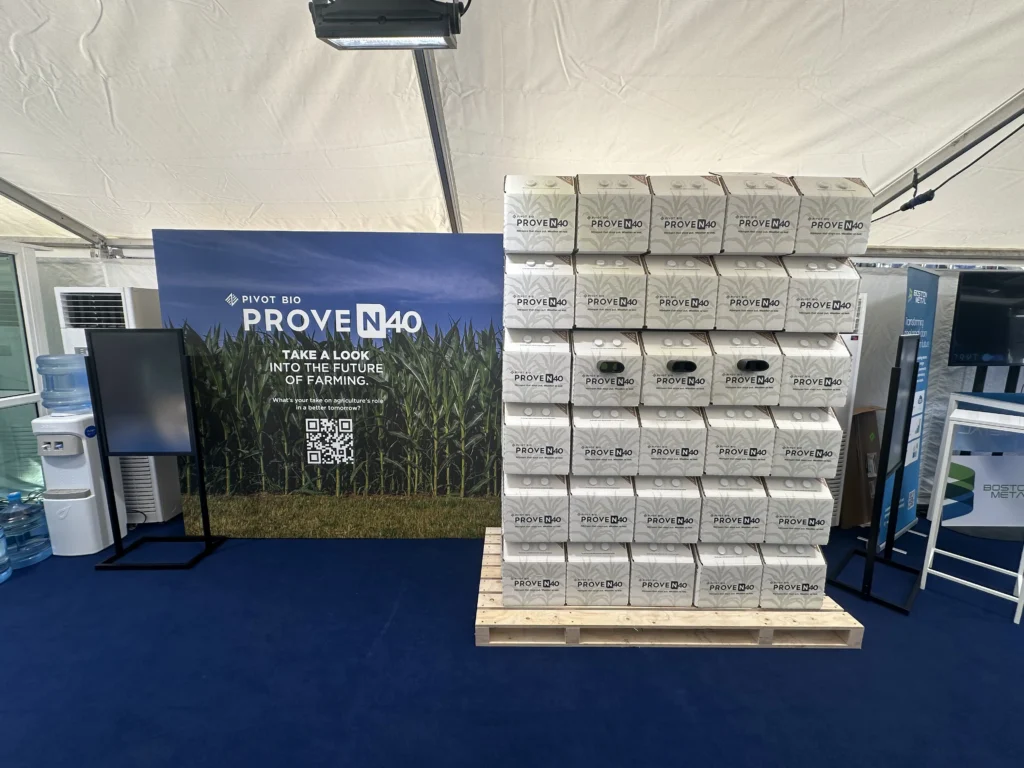
4. Work with what you have
Make your offering the centerpiece.
Don’t have room to bring in the big equipment? Maybe you can just feature the newest, most innovative component. Suspend it in space to let attendees have a look from every angle. Give them an interactive 3D model to play with, and put it on a big screen for onlookers.
Is your offering an inherent draw? Maybe, maybe not. But by putting the spotlight on it, you give it a platform of importance and allow yourself to orient the whole experience around it in a way that ensures no one will forget what it is you’re selling, what it does and why they should care.
You will have made it the star of the show rather than spending money trying to make the show all about something else entirely.
Invest in reusable assets.
If you’re starting from scratch, consider purchasing elements that can be updated and reused. For example, structures that can be “re-skinned,” signage that can be easily (and cheaply) swapped out, and LED panels that can be rented or purchased once and used over and over.
Don’t think about these as one-time costs. Instead, position them as investments in the brand’s ability to produce impactful and repeatable experiences.
Or maybe you have some pieces in storage somewhere that could be refreshed or repurposed. Get creative with how existing assets might be used or updated in the context of your experience.
Use your shared knowledge base. Ask around!
You don’t have to reinvent the wheel, especially if this isn’t your area of expertise.
There are inevitably a number of people in your organization or professional network who have experience producing events and in-person experiences.
Reach out and see what has worked — and not worked — for them. You’d be surprised how many pro tips and cautionary tales you can source to inform what approaches you decide to emulate and which ones you opt to avoid altogether.
You can also see what people have found valuable as attendees.
Whether you survey your customer base, your sales reps, other coworkers or just reference your own experience, you’re bound to glean some insight into what people really appreciate, what doesn’t move the needle and what may turn them off altogether.
Last but not least, don’t be afraid to consult the experts.
Experiential marketing specialists are a great resource for guidance and advice, even if they don’t end up helping you produce your experience.
We’re obviously partial to our XM team here at OBP (they are award-winning, after all). They’re always willing to learn about what you’re trying to do, share their POV and see if there might be a way that we can help.
5. Transcend and amplify
Make it a cross-channel experience.
Part of enriching the experience and breaking out of the trade show box means expanding the event beyond a single place and moment in time.
Whether it’s pre-event promotion, real-time interactivity or post-event recapping, there is so much you can do to leverage the paid, earned, shared and owned channels at your disposal to increase the effectiveness of your investment in the experience itself.
From a timing standpoint, it’s easiest to think about this in three basic phases: before, during and after.
Increasing interest before the event.
For starters, don’t wait until people show up to engage them. Work out your “pre-show” communications and content plan to determine the best way to prime attendees. Give them a reason to want to show up and get excited about what they can expect.
Maybe this looks like a reminder of how great the last event was. Maybe it’s teasing a new facet of this year’s experience or some kind of in-person opportunity or reveal. Whatever it is, crank up the FOMO to 11 early and often, using all available comms channels to reach prospective attendees.
How much should you invest in promotion? This depends on what an attendee is worth to you.
Go back to that math you did and decide how many attendees you need. You could now take it one layer further and figure out how many potential attendees there are (i.e., people who could feasibly attend your experience) and how much you need to increase the baseline percentage of those people who attended your past experiences (i.e., what promotion needs to accomplish).
In a perfect world, you could even model the value of media exposure and impressions to a potential attendee based on benchmarks for promotional audience reached compared to past attendance.
Understanding the role of — and targets for — pre-show promotions will help ensure they are as effective as possible to get people to the experience.
Generating engagement during the event.
Getting people to the experience doesn’t have to just mean in person.
Face it, some people may not be able to attend in person but are still interested in what is happening. Find as many ways as possible to bring them into the experience.
This can take a few different forms:
- Extend and expand it. Even if the experience revolves around an in-person event, is there a way to talk about it as bigger and broader than that? What about starting earlier or ending later with bonus experiences like workshops, trainings, demos, entertainment, etc.? Find a way to give your brand’s experience more gravity and longevity than whatever event it’s connected to.
- Offer a virtual option. In a post-COVID world, this is obvious and relatively easy, but it will depend largely on what kind of event or experience it is. Talks, presentations and panel discussions are easily streamed. Product demos or impromptu interviews can be as easy as “going live” on a social site. Just make sure the juice is worth the proverbial squeeze and that programming will be consistently compelling to tune into. You’ll also need to adequately promote this live content in advance to ensure strong viewership.
- Make it interactive. Watching and listening is one thing, but it’s even better when the communication is two-way. Let remote attendees submit questions to a Q&A. Display real-time audience comments in the physical space (moderation is highly recommended). Or even consider having a remote presenter “coming to you live” from another off-site location (e.g., a farm, trial plot, factory, data center).
- Get them talking, and make it easy. Encourage the conversation to be social and public. Yes, the social landscape is increasingly fragmented, so either choose the most relevant platform where your audience is most active or find an elegant way to let people interact with the experience on their platform of choice. Prompt dialogue. Invite response.
Do all of these elements add layers of complexity to activating your experience? Yes.
Do they add size and scale to your experience, ultimately engaging a broader audience? Also yes.
It’s up to you to determine the value of investing in these areas and how effective they could be in achieving your predetermined objectives.
Extending the experience after the event.
It’s tempting to share some kind of event recap on your social channels and call it a day. After all, your team is probably exhausted.
But post-show comms and content should be geared toward two very specific objectives:
- Using captured content as valuable content. Hopefully, you were able to capture all of the most informative and/or entertaining moments of the experience. Now is the time to leverage them. Maybe interviews were captured. Bonus panel content. Impromptu demos. User testimonials. Flow all of these things into your ongoing content plan, from social to email to website. Infuse them into new content that your team creates (e.g., “10 Things We Learned From Talking to Growers at [Event]”).
- Cranking up post-show FOMO. Want more people to attend your next event? Make sure they know how awesome this event was, and give them an easy way to sign up to be informed about the next one. That could be as simple as sharing dates and locations once they are set, but it could also be a contest to win an all-expenses-paid trip, a VIP experience or a chance to participate in an exclusive opportunity. Capitalize on the afterglow to capture interest for the next one.
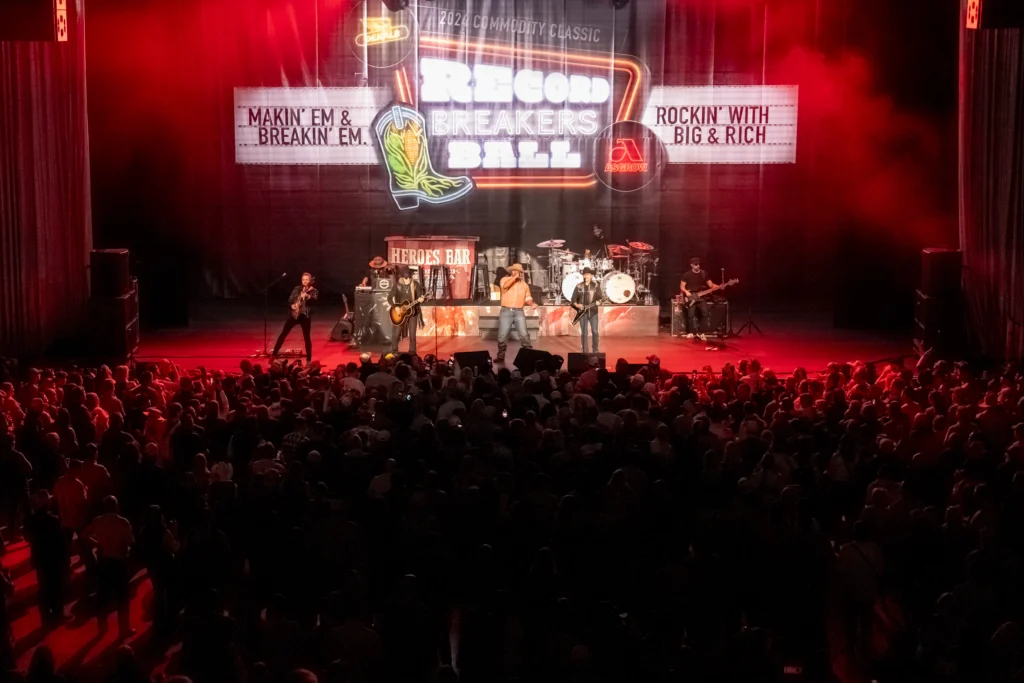
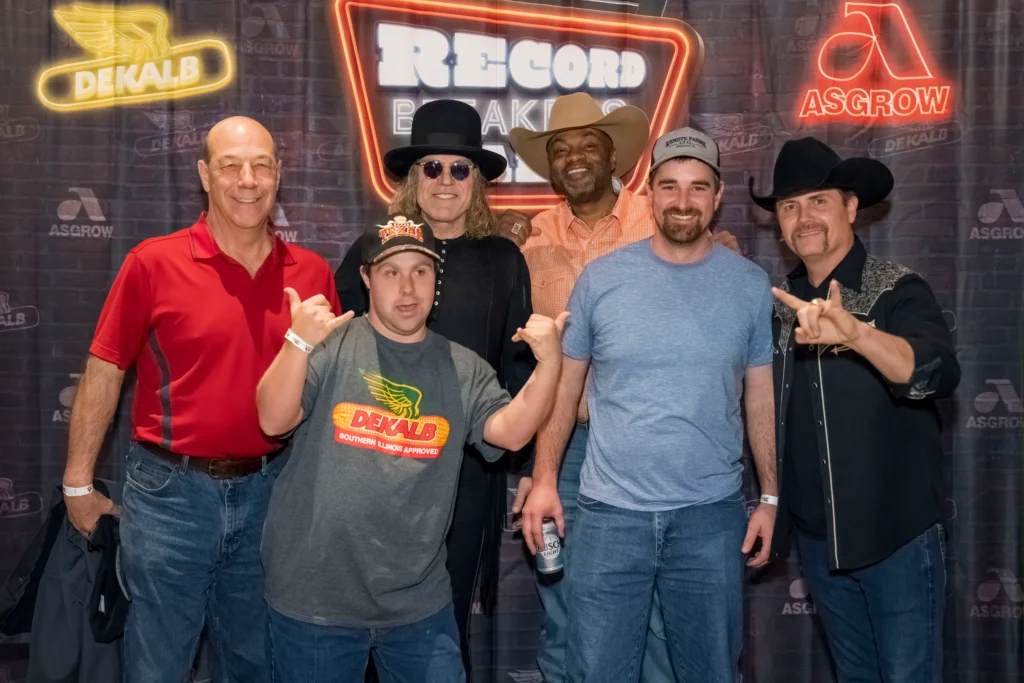
Remember: It’s about making memories.
As we wind this down with a recap, it’s worth noting that, at the end of the day, experiential marketing has the same aim and mode of action as any other marketing communication — making memories in minds.
How those memories are made and what those memories are about all comes down to the experience.
To create an effective experience, be sure to commit these five points to your own memory:
- Design from the attendees’ perspective.
- Balance business goal focus with on-brand fun.
- Walk the innovation walk.
- Build around your existing assets.
- Break the boundaries of time and space.
And if you find yourself in need of an expert POV, you know who to call!
